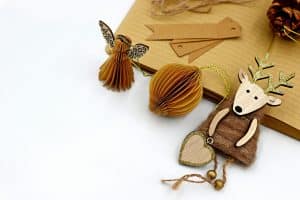Micro-Investing in Fine Art: Masterpieces for Pocket Change
Investing in fine art has long been reserved for the wealthy elite, with masterpieces selling for millions of dollars at prestigious auctions. However, with recent advancements in technology and a shift towards more accessible forms of investing, the art market is opening up to a new type of collector – the micro-investor. Micro-investing in fine art allows individuals to own a piece of the art world for just a fraction of the cost, making it an attractive option for those looking to diversify their investment portfolios without breaking the bank. In this article, we will explore the concept of micro-investing in fine art and why it’s a smart move for both seasoned investors and novices alike.
The Rise of Micro-Investing
Micro-investing, also known as fractional investing, is becoming increasingly popular in the world of finance. It involves investing small amounts of money into various assets, such as stocks, real estate, and even fine art. With the rise of technology, micro-investing has become more accessible, with numerous apps and platforms allowing individuals to invest as little as $5 or $10 in a particular asset. This has democratized investing and made it possible for individuals with limited funds to participate in the market.
Why Micro-Investing in Fine Art?
Diversification
One of the primary reasons to consider micro-investing in fine art is to diversify your investment portfolio. Unlike traditional forms of investing, which are heavily reliant on the stock market, investing in art offers a unique asset class that is not correlated with the stock market’s performance. This means that if the stock market crashes, your art investments will not be affected in the same way. By diversifying your investments, you can reduce your overall risk and potentially increase your returns.
Affordability
One of the most significant barriers to investing in fine art is the high price tag attached to it. However, with micro-investing, this barrier is significantly reduced. By investing small amounts, you can own a fraction of a painting that can potentially appreciate in value over time. This allows individuals with limited funds to get a taste of the art market and potentially see significant returns on their investments.
No storage or maintenance costs
Owning a piece of art comes with additional costs, such as storage and maintenance. However, with micro-investing, these costs are absorbed by the platform or the collective ownership structure. This means you don’t have to worry about storing and maintaining the artwork, making it a hassle-free investment option.
Masterpieces for Pocket Change
Micro-investing in fine art doesn’t mean you have to settle for lesser-known or emerging artists. Many platforms and investment companies offer access to masterpieces by renowned artists such as Pablo Picasso, Vincent Van Gogh, and Claude Monet. By investing a small amount, you can own a fraction of a famous work of art that could potentially appreciate in value over time.
Risks to Consider
As with any investment, there are risks involved in micro-investing in fine art. The art market can be volatile, and the value of the artwork you own can fluctuate. Additionally, there is no guarantee that the artwork you invest in will appreciate in value. It is essential to do your research and carefully consider the risks before investing in any piece of art.
The Bottom Line
Micro-investing in fine art is a savvy move for those looking to diversify their investment portfolios and gain a foothold in the art market. With its accessibility, affordability, and potential for high returns, micro-investing in fine art offers a unique opportunity for both seasoned investors and newbies alike. However, it is crucial to understand the risks involved and do your due diligence before making any investment decisions. Happy collecting!










